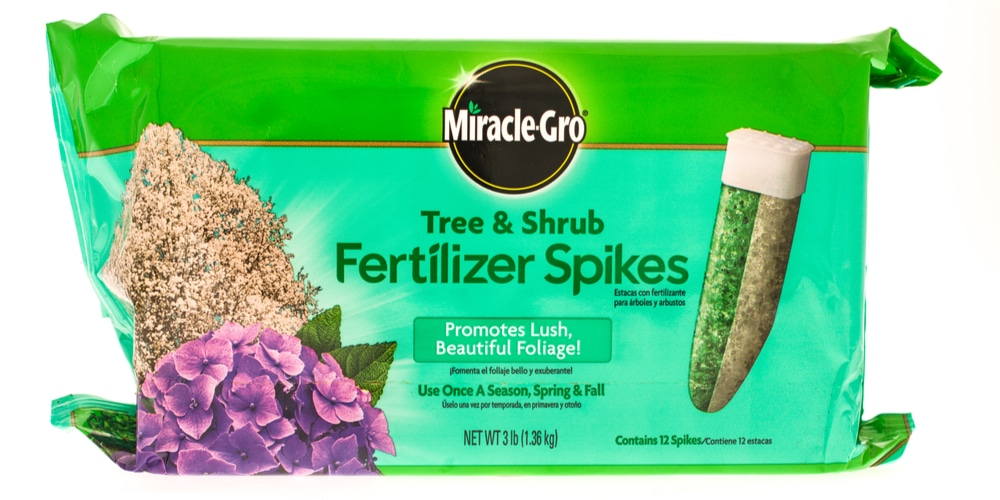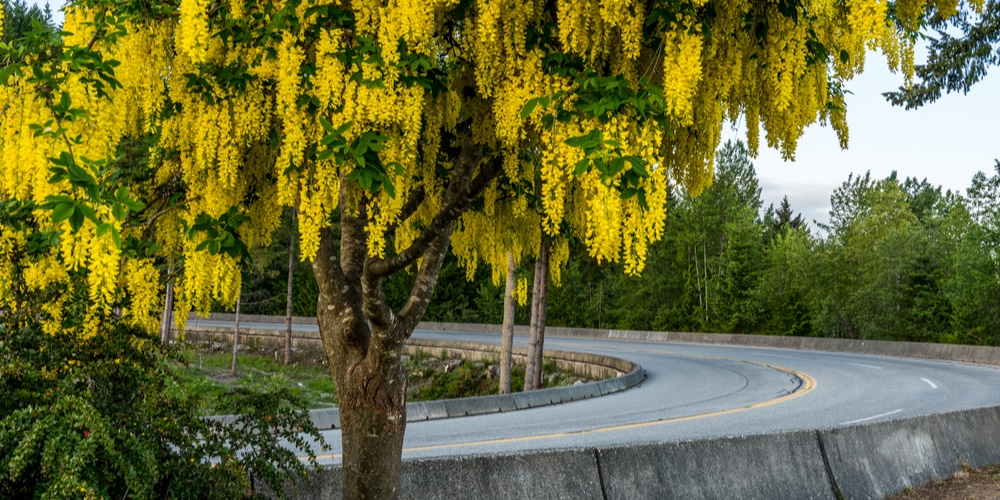Fertilizer spikes are generally more convenient than other types of fertilizer because of their set-and-forget application. The slow-release aspect and removability tend to lower the chances of your plants getting burned by too much fertilizer.
Then again, you may be wondering if the same applies to trees. Can fertilizer spikes kill trees?
Are Fertilizer Spikes Good for Trees?
Proper placement and the number of fertilizer spikes can spell the difference between a healthy tree and a dead one. Fertilizer spikes can kill trees if you’re not careful, as too much nitrogen around the plant and close to the trunk will weaken and eventually cause it to die.
High nitrogen concentrations will burn the roots, and without a strong root system most plants, including trees, won’t be able to take in water or nutrients from the soil. The tree will exhibit yellow leaves, will wither, and then slowly decline until it can no longer be rescued.
The most common mistake in putting fertilizer spikes in trees is placing them too close to the trunk. A tree’s roots tend to spread out in all directions, and one way to determine where they are is to locate the drip line. The drip line is a circular area where the tree’s canopy extends to the ground, which is the best spot to water and put fertilizer spikes in.
The bottom line is that fertilizer spikes, like other fertilizer types, can be good for trees as long as you follow instructions and know where to put them. This leads us to the next question…
How Do You Use Fertilizer Spikes on Trees?
There are several brands of tree and shrub fertilizer spikes you can buy in the market. Generally speaking, an all-purpose tree fertilizer should be suitable for all tree varieties. However, you can get a specific kind that’s specially formulated for your tree type.
All fertilizer spikes for trees and shrubs will have usage instructions on the packaging or the label, and it’s recommended that you follow them to prevent the occurrence of fertilizer burn and tree death. If the spike fertilizer is old and the package or label has become unreadable, follow these step-by-step instructions.
Step 1. Find and locate the drip line of the tree you wish to fertilize.
Step 2. Open the fertilizer spike package and lay out hole markings at a distance of three feet apart.
Step 3. Put the fertilizer spike in the ground securely. You may need to dig up a hole beforehand or hammer them in gently.
You can water the soil around the spikes to activate the fertilizer, which will leach nutrients into the ground. Most fertilizer spikes are designed to release nutrients over some time, so replacing them every month with new ones is not necessary.
Your trees should begin to perk up and show improvement about two to three weeks after planting the fertilizer spikes. Most slow-release fertilizers tend to last anywhere between two to eight months.
When is the Best Time to Fertilize Trees?
The best time to fertilize trees is at the start of their growing season, which is usually in the spring season. New growth will emerge, and you can support this push by giving the plant the nutrient it needs, along with water.
The timing may differ from one tree species to another, as well as the type of fertilizer that works best for them.
Tree fertilizer spikes may be planted to the ground twice per growing season- one in spring and the other during the start of the fall season. Fertilizing during winter is not recommended as most trees enter a period of dormancy, and forcing them to grow new branches and leaves can result in winter damage.
It’s best to know the signs of fertilizer burn so you know when to stop feeding your trees. When the leaves turn brown or yellow, or when the leaves appear crunchy and burnt then it’s usually a sign of over-fertilizing. If this is the case, then you should stop feeding and water your shrubs or trees to wash off the excess nitrogen. In the event that you’ve put fertilizer spikes, you can simply remove the spikes and put them back after the tree has recovered.

